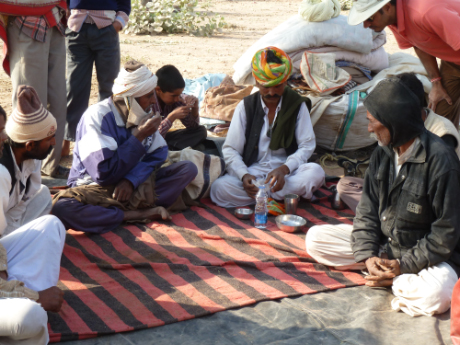 |
 |
| One of the most interesting places we went was the town of Naguar, where there was a livestock (camels, cattle, and horses) fair going on. People came from miles around and stayed for about a week buying and selling stock. |
The fair was HUGE. The owners slept near their stock and the tents and animals stretched as far as we could see. There were separate areas for the camels, the cattle, and the horses. |
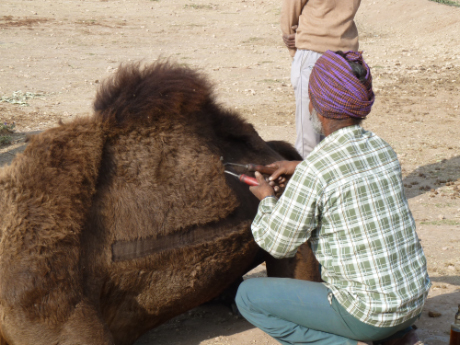 |
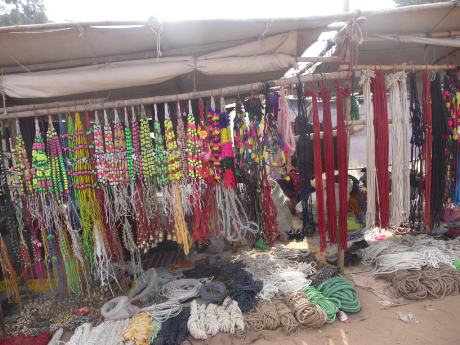 |
| When we asked what made a camel more valuable, we were told "the beautiful ones are more expensive." Beauty is in the eye of the beholder, but people did decorate their camels by shaving designs into their coats. |
There were also a number of stands where you could buy adornments for your camels including beads, necklaces, anklets, and fancy lead ropes. |
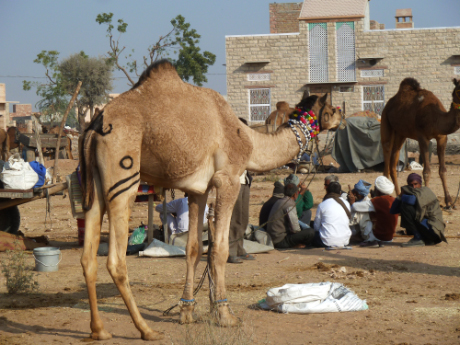 |
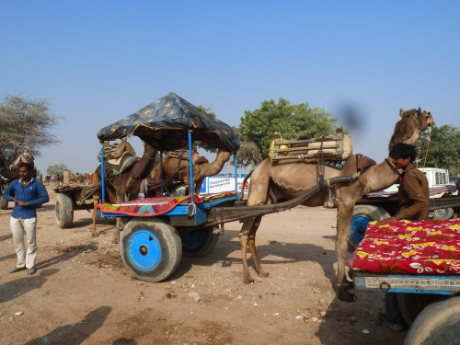 |
| The camels, usually haughty to begin with, looked even more so once they were all decked out. | Above all, though, the camels are work animals and were the animal we most often saw pulling carts around the fair. We took a tour of the fair by camel cart; it was extremely uncomfortable. |
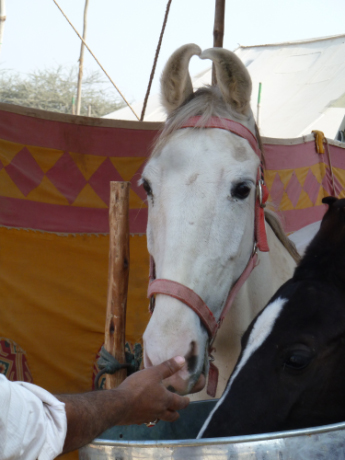 |
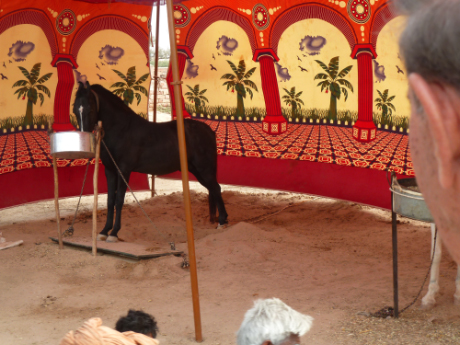 |
| There was a somewhat usual breed of horse there that is specific to Rajasthan. Their distinguishing mark is the odd curve of their ears. They are very handsome and even-tempered. |
Almost all of them were kept in shelters, this one fancier than most, and are so well-cared for that they must be prized possessions. |
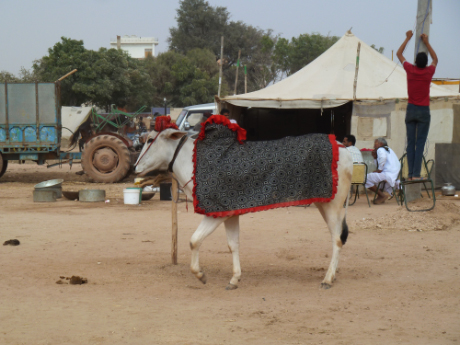 |
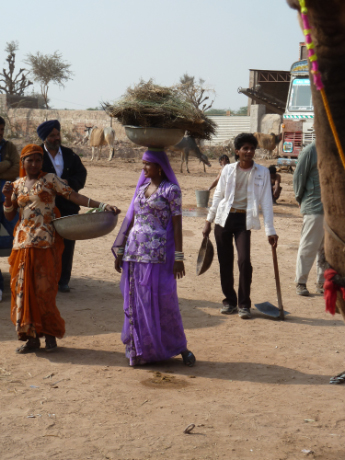 |
| We also saw lots of cattle but this one was clearly special, with the blanket covering his hump and back. It turns out that he is a racer (yes, they have cattle races, rather like our harness racing) and was there to stand at stud, not to be sold. |
Although most of the participants at the fair were men, some had brought their families with them and the women continued to perform their usual chores in their traditional dress. |
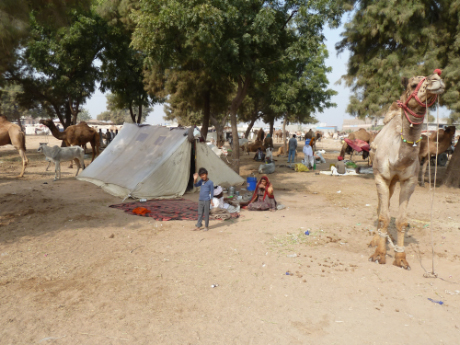 |
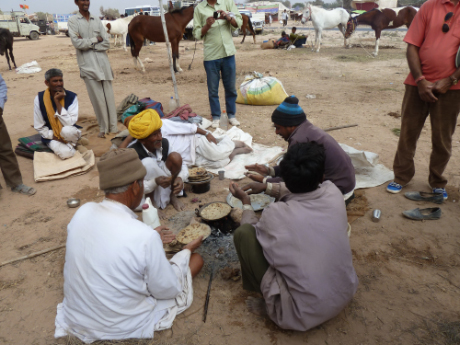 |
| There were even a few kids along for the ride, mostly living in tents far back in the fairgrounds. |
But most of the men had to fend for themselves. Girish commented that when they got home they probably claimed that the didn't know how to cook... |
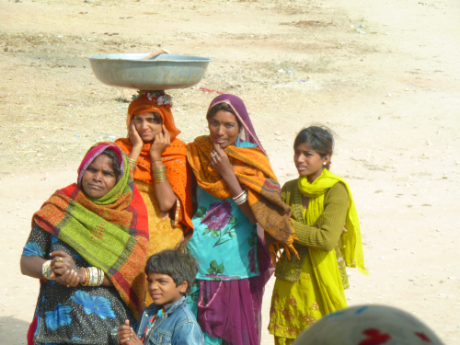 |
Why Are They Selling Sacred Cows?One of the best-known things about India is that there are cows roaming around the streets; this was certainly true everywhere we went. What is perhaps less well-known is that Hindus do not worship cows, although they revere them. The cattle we saw at the fair were destined for a life of hard work giving milk or pulling plows. It is only when a cow or steer gets too old to be of any use to the family that it is turned out to wander the streets. People feed the cows as a opportunity for good karma (many cities had feeding stations where you could buy fodder for them), but other than that they are usually left alone until they die. In Naguar, however, there is a very unusual establishment: a cow (cattle) hospital that picks up sick or injured cows and nurses them. |
| This fair is not generally a tourist attraction, so some of the families weren't quite sure what to make of us and our bus. | |
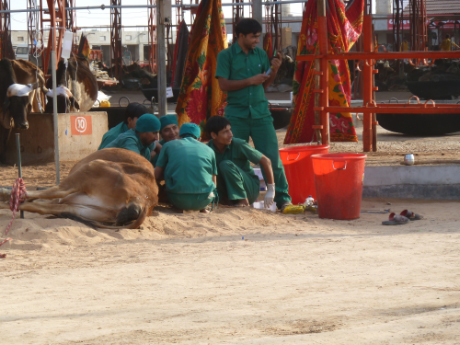 |
 |
| By the time a cow makes it to the hospital it is often in very bad shape. A team of surgeons operates out in the open to try to help. |
The hospital is quite large and has areas for cows with different ailments. This is the section for cattle that can no longer stand. They must be fed individually by hand. Other sections are for broken legs, illnesses of various sorts, etc. |
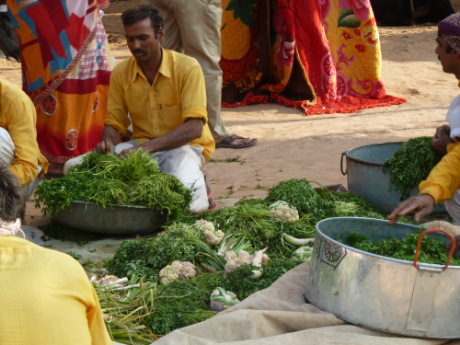 |
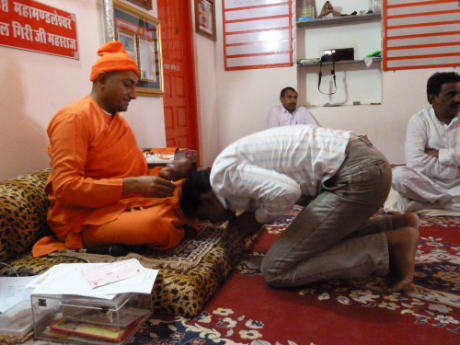 |
| Tons of fodder must be prepared every day. The food is donated by locals or is purchased with donations. | The mastermind behind the hospital is this young guru. We were privileged to meet him and each of us received a personal blessing from him. |
 |
 |
